Otitoaleke G. Akinola
Shape-Dependent Multi-Weight Magnetic Artificial Synapses for Neuromorphic Computing
Nov 22, 2021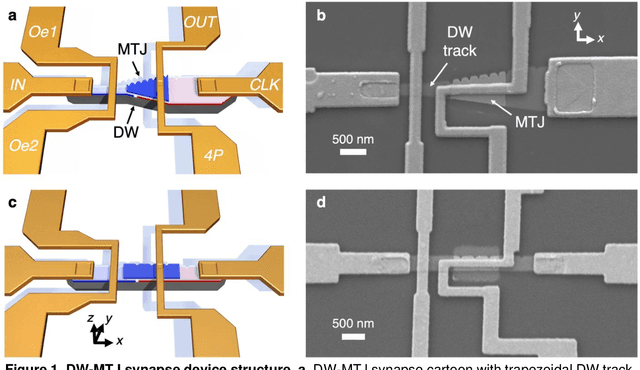
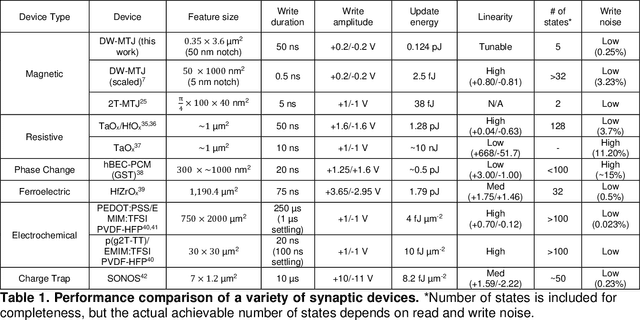
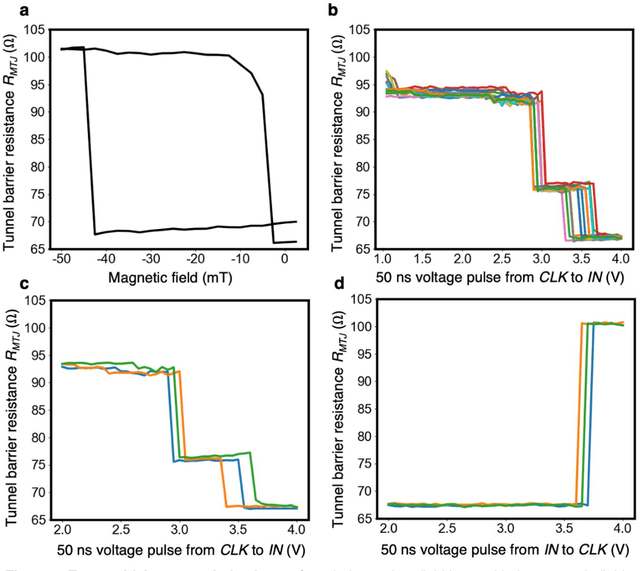
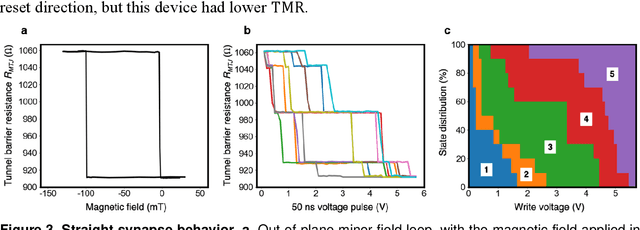
Abstract:In neuromorphic computing, artificial synapses provide a multi-weight conductance state that is set based on inputs from neurons, analogous to the brain. Additional properties of the synapse beyond multiple weights can be needed, and can depend on the application, requiring the need for generating different synapse behaviors from the same materials. Here, we measure artificial synapses based on magnetic materials that use a magnetic tunnel junction and a magnetic domain wall. By fabricating lithographic notches in a domain wall track underneath a single magnetic tunnel junction, we achieve 4-5 stable resistance states that can be repeatably controlled electrically using spin orbit torque. We analyze the effect of geometry on the synapse behavior, showing that a trapezoidal device has asymmetric weight updates with high controllability, while a straight device has higher stochasticity, but with stable resistance levels. The device data is input into neuromorphic computing simulators to show the usefulness of application-specific synaptic functions. Implementing an artificial neural network applied on streamed Fashion-MNIST data, we show that the trapezoidal magnetic synapse can be used as a metaplastic function for efficient online learning. Implementing a convolutional neural network for CIFAR-100 image recognition, we show that the straight magnetic synapse achieves near-ideal inference accuracy, due to the stability of its resistance levels. This work shows multi-weight magnetic synapses are a feasible technology for neuromorphic computing and provides design guidelines for emerging artificial synapse technologies.
Unsupervised Competitive Hardware Learning Rule for Spintronic Clustering Architecture
Mar 24, 2020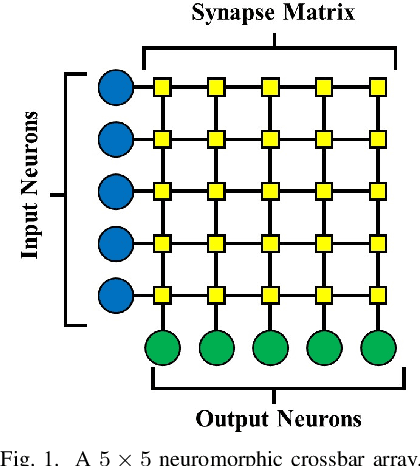
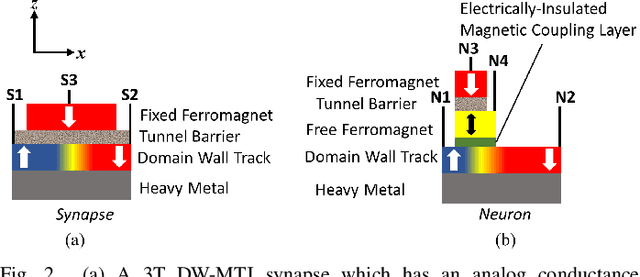


Abstract:We propose a hardware learning rule for unsupervised clustering within a novel spintronic computing architecture. The proposed approach leverages the three-terminal structure of domain-wall magnetic tunnel junction devices to establish a feedback loop that serves to train such devices when they are used as synapses in a neuromorphic computing architecture.
Plasticity-Enhanced Domain-Wall MTJ Neural Networks for Energy-Efficient Online Learning
Mar 04, 2020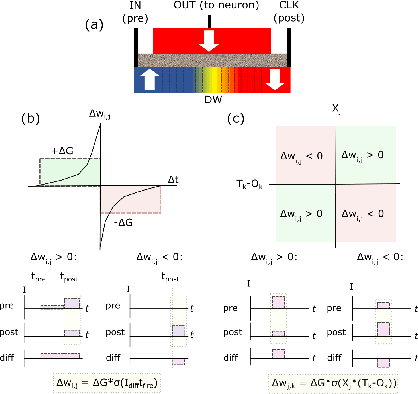
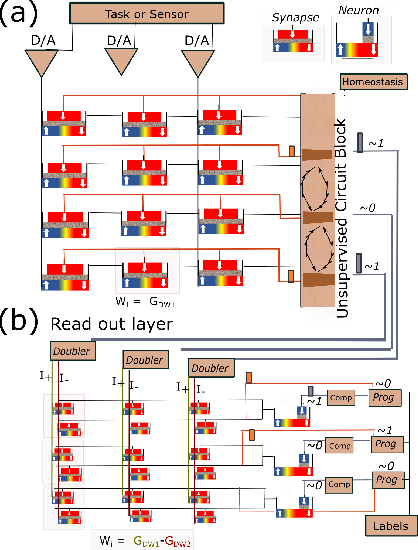
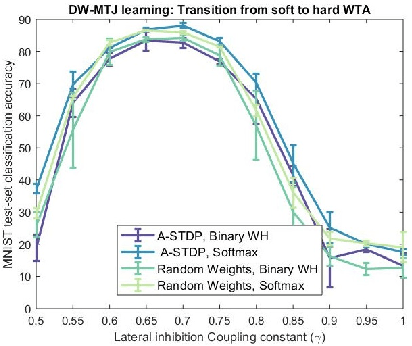
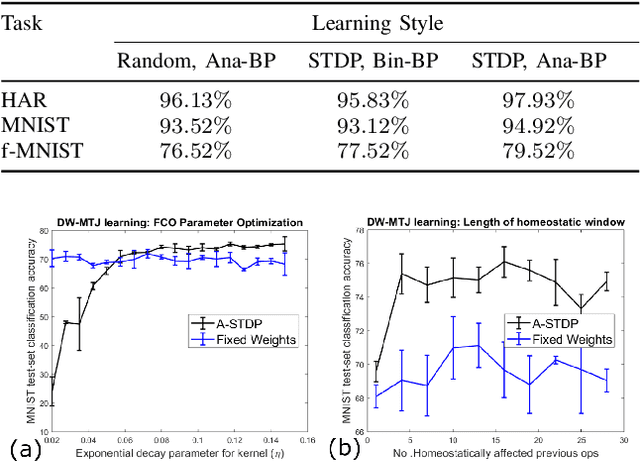
Abstract:Machine learning implements backpropagation via abundant training samples. We demonstrate a multi-stage learning system realized by a promising non-volatile memory device, the domain-wall magnetic tunnel junction (DW-MTJ). The system consists of unsupervised (clustering) as well as supervised sub-systems, and generalizes quickly (with few samples). We demonstrate interactions between physical properties of this device and optimal implementation of neuroscience-inspired plasticity learning rules, and highlight performance on a suite of tasks. Our energy analysis confirms the value of the approach, as the learning budget stays below 20 $\mu J$ even for large tasks used typically in machine learning.
 Add to Chrome
Add to Chrome Add to Firefox
Add to Firefox Add to Edge
Add to Edge